The EB2 visa advanced degree subcategory is a green card for persons who have an advanced degree (that is at least a master’s degree or a bachelor’s degree with at least 5 years of post-college progressive work experience) and a job offer where the position requires that specific type of degree in the United States. Some examples of the professions that can be filed for EB2 green cards are engineers, physicians, surgeons, architects, lawyers, accountants, pharmacists, professors, and teachers.
Under the INA §203(b)(2), 8 USC §1153(b)(2), the EB2 visa advanced degree subcategory is part of the second preference employment-based immigrant visas where a U.S. sponsoring employer and a PERM labor certificate is required unless a National Interest Waiver or a Physicians National Interest Waiver is filed with it. A PERM labor certificate can also be waived if the occupation falls under a Schedule A exception, however, a U.S. sponsoring employer will still be required. Self-sponsorship for the EB2 green card petition is only permitted when a National Interest Waiver or a Physicians National Interest Waiver is filed.
- 1.
- a.
- b.
- c.
- 2.
- 3.
- a.
- b.
- 4.
- a.
- b.
- c.
- 5.
- 6.
- a.
- b.
- c.
Table of Contents
A person qualified for an EB2 green card must have (1) an advanced degree and (2) a job offer where the position requires that specific type of degree in the United States. The advanced degree can be (1) a U.S. master’s degree or a higher degree (or its foreign equivalent), or (2) a U.S. bachelor’s degree (or its foreign equivalent) with at least 5 years of post-college progressive work experience in the specialty.
For a position that requires a doctoral degree (Ph.D.), the required doctoral degree cannot be substituted by a combination of educational degrees and/or work experience.
The original statutory wording for qualified persons in the EB2 advanced degree green card petitions can be found in 8 CFR §204.5(k)(2).
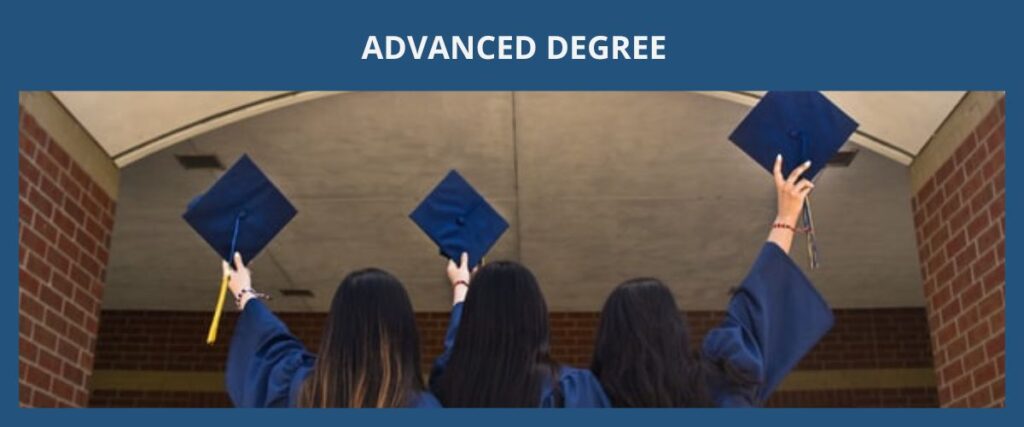
The advanced degrees can be a master’s degree or a higher degree such as a Ph.D., MD, JD (or its foreign equivalent). A U.S. medical degree (MD) is an advanced degree because a bachelor’s degree is required for admission to U.S. medical schools. Foreign medical degrees usually require 5 to 7 years of education when the foreign medical school does not require a bachelor’s degree for its admission.
The Electronic Database for Global Education (EDGE) is usually used by the USCIS (United States Citizenship and Immigration Services) to evaluate the equivalency of a foreign degree to a U.S. degree. For example, EDGE determined in one case that a Master of Commerce degree from India was only equivalent to a U.S. bachelor’s degree. Or in another case, a foreign 3-year bachelor’s degree with a 2-year master’s degree together was determined as only equivalent to a U.S. bachelor’s degree and thus not qualified as an advanced degree for the EB2 green card petition.
The advanced degree can also be a combination of a bachelor’s degree (B.A. or B.S. or foreign equivalent) and at least 5 years post-college progressive work experience in the specialty. The bachelor’s degree here cannot be further substituted by a combination of educational degrees and/or work experience. Generally, bachelor degrees under the EB2 green card petition require 4 years of education and thus 3-year bachelor degrees cannot be used. The 3-year bachelor degrees, however, can be used for skilled workers under an EB3 green card petition.
Provisional degrees that verify all degree requirements are completed before the university’s next commencement ceremony can be used to calculate the start date of the person’s 5-year post-college progressive work experience.
Progressive work experience is the post-college employment experience where the person progressed, moved forward, and advanced toward increasingly complex or responsible job duties. In other words, post-college work experience must show that the person moved towards higher levels of job responsibilities and knowledge in their specialty for it to be qualified as progressive work experience under the EB2 green card petition.
The 5 years of post-college work experience can be used to satisfy both the equivalency of the master’s degree and the position’s required work experience. For example, a position listed in the PERM labor certification that requires a master’s degree (or equivalent) and 3 years of work experience can be satisfied by a person who has a bachelor’s degree and 5 years of progressive work experience because the 5 years of progressive work experience can be used to establish the 2 years of the master’s degree (i.e., advanced degree required can be a bachelor’s degree and 5 years progressive work experience) and the 3 years of work experience required by the position at the same time.
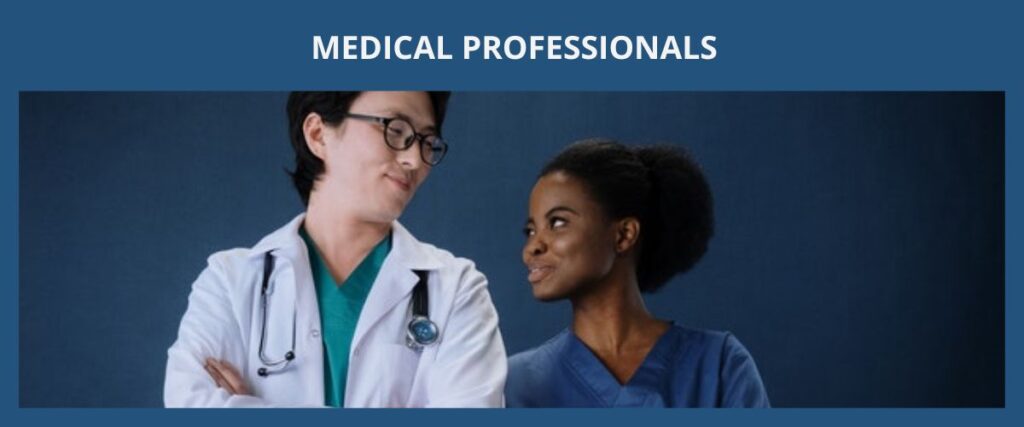
Physicians
A treating physician (doctor) under the EB2 advanced degree green card petition must be able to show that the person (1) has a qualified advanced degree and the job offered requires that advanced degree, (2) has obtained the state license at the time the PERM labor certificate is filed or the state license must be able to be obtained within a proximate time of entry by completing a ministerial process, and (3) for persons who graduated from nonaccredited medical schools, there must be a passage of Part I-II of NBMEE (National Board of Medical Examiners Examination) or Steps 1-2 of USMLE (U.S. Medical Licensing Examination) and an ECFMG certification (Educational Commission for Foreign Medical Graduates) that shows the person’s English language competency.
For a foreign medical degree to qualify as equivalent to a U.S. MD degree under the EB2 green card petition, the foreign medical degree should (1) have required a bachelor’s degree for admission to its medical school, or (2) there is an education credential evaluation determination of it being equivalent to a U.S. MD degree based on the foreign degree alone, or (3) the person has passed Steps 1, 2, and 3 of the USMLE.
Most nursing positions (e.g., registered nurse) should file for an EB3 green card petition instead of an EB2 green card petition because USCIS determines that most nursing positions do not need an advanced degree. The exceptions to this would be higher-level positions that usually require advanced degrees such as the director of nursing, assistant director of nursing, nurse practitioners, or clinical nurse specialists.
The EB2 green card petition under the advanced degree subcategory has two main requirements that need to be satisfied: evidence must be provided to the USCIS to show that (1) the person has an advanced degree and (2) the job offer is for a position requiring that specific type of degree in the United States. The advanced degree under the EB2 green card petition must be at least a U.S. master’s degree (or its foreign equivalent) or in a combined form of a U.S. bachelor’s degree (or its foreign equivalent) and at least 5 years of post-college progressive work experience in the specialty.
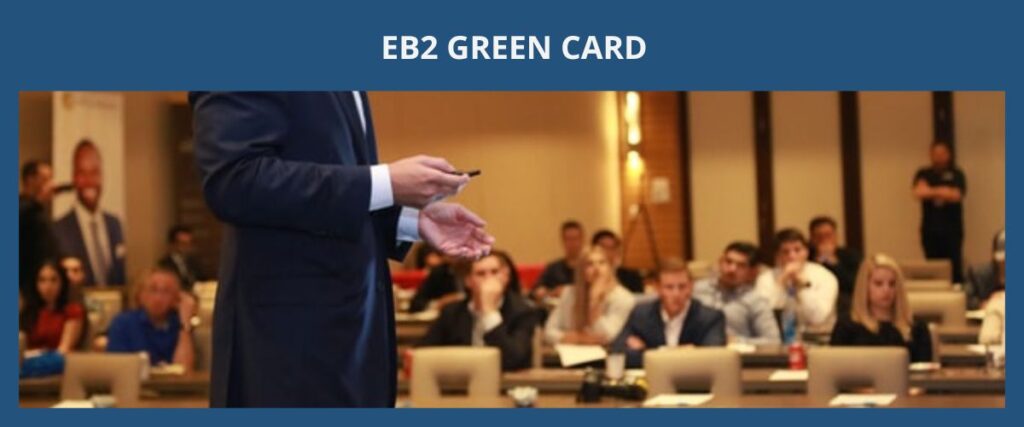
Documents Required for the EB2 Green Card (Advanced Degree)
Commonly used documents for the advanced degree subcategory under the EB2 green card petition includes but is not limited to:
- Employment contract or offer letter from the U.S. sponsoring employer
- Official academic record of an advanced degree (i.e., a master’s degree or a higher degree)
- Official academic record of a bachelor’s degree and letters from current or former employers that verifies the person has at least 5 years of post-college progressive work experience in the specialty
- Educational transcripts and course descriptions
- Foreign degree/credential evaluations (i.e., foreign education evaluations are used to determine the equivalency of a foreign degree to a U.S. degree) are required when a foreign degree is used
- Letters from former employers that verify past employment and work experience (must include employment dates and a description of the person’s job duties)
- Supporting documents that verify past employment, such as W-2 tax forms, pay stubs, termination letter, employment contract, or offer letter
- Documents that show the U.S. sponsoring employer has continuing ability to pay the offered wage as of the priority date, such as annual reports, federal income tax return, audited financial statement
- An approved PERM labor certification (ETA Form 9089) unless a National Interest Waiver (NIW) or a Physicians National Interest Waiver (PNIW) petition is filed
- An uncertified ETA Form 9089 if Schedule A is filed
The original statutory wording for the evidentiary requirements of the EB2 advanced degree green card can be found in 8 CFR 204.5(k)(3).
The total time an EB2 green card takes is consisted of the processing time for (1) the PERM labor certification (ETA Form 9089) with the U.S. Department of Labor if filed without a National Interest Waiver or a Physician’s National Interest Waiver (or does not fall under the Schedule A exemption), (2) the EB2 green card petition (Form I-140) with the USCIS, and (3) the change of status when the person’s priority date becomes current by filing the Form I-485 application if adjusting status within the United States or the DS-260 application if doing consular processing at a U.S. consulate or embassy located outside the United States.
Factors that influence the EB2 green card petition processing time usually include but is not limited to where the person (or spouse) was born, if there was any Request for Evidence (“RFE”) issued, audits of PERM recruitments, and the caseload of the DOL, USCIS service center, and the U.S. consulate or embassy.
A rough estimate for the PERM labor certification is around 6 to18 months depending on if the U.S. sponsoring employer is audited for the recruitment process. The PERM labor certificate is a process with the U.S. Department of Labor where the U.S. employer will have to show an effort in trying to hire available and qualified U.S. workers for the job position offered to the foreign worker. The purpose of the PERM labor certification is to make sure that hiring foreign workers will not harm U.S. workers. The PERM labor certification process includes posting job advertisements on certain recruitment platforms and interviewing the U.S. workers who respond to those job postings. An approved PERM labor certification usually takes around 6 to 12 months to complete.
There are 3 exceptions that allow the PERM labor certificate to be waived under the EB2 green card petition: the PERM labor certificate is not required when the EB2 green card petition is filed with a (1) National Interest Waiver (NIW), (2) Physicians National Interest Waiver (PNIW), or (3) it falls under Schedule A.
Occupations under Schedule A are pre-certified by the U.S. Department of Labor as having a shortage in available and qualified U.S. workers which means that hiring foreign workers in those certain occupations will not harm U.S. workers. Current occupations under Schedule A include 2 groups: (1) Group I: professional nurses and physical therapists, and (2) Group II: persons of exceptional ability in the performing arts, sciences, or arts.
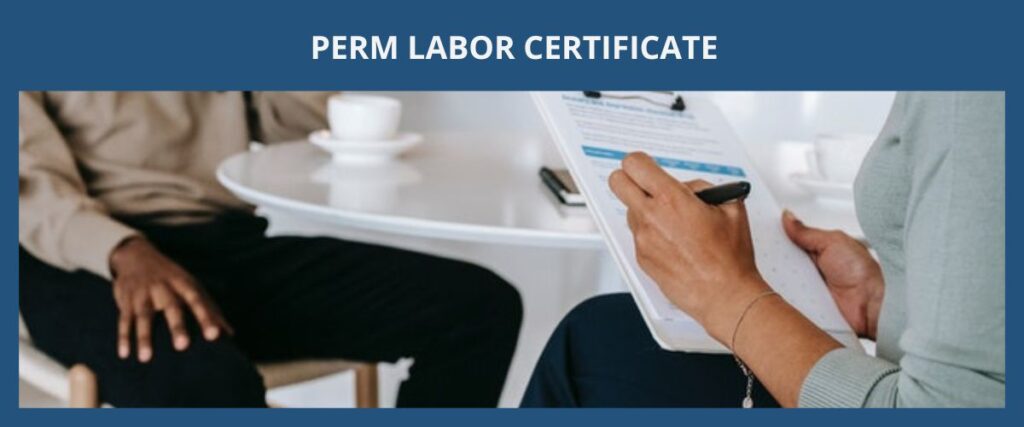
A rough estimate for the Form I-140 petition is around 6 to 12 months. However, premium processing (Form I-907) is available for the Form I-140 petition part of the EB2 green cards. Premium processing is an optional expedited service where the USCIS guarantees that the case will be processed within 15 calendar days (not business days). When a notice of intent to deny (NOID) or a request for evidence (RFE) is issued, a new 15 calendar day will start when the USCIS receives a response from the applicant. If the USCIS fails to process within the time frame, a refund of the service fee will be given and the case will continue to be expedited. Please note that USCIS’s guaranteed response may be an approval notice, denial notice, notice of intent to deny (NOID), request for evidence (RFE), or open an investigation for fraud or misrepresentation.
The current premium processing fee for the EB2 green card is $2500 USD and it can be requested when the original petition is submitted to the USCIS or an upgrade to premium processing can be done when the case is pending.
Priority Date for Status Change
There are two parts in the processing time for a change of status: (1) the time to when the person’s EB2 green card petition priority date becomes current which can range from no wait time to multiple years depending on what country the person or their spouse was born in, and (2) the time to process Form I-485 for adjustment of status or DS-260 for consular processing which a rough estimate can range from 4 to 15 months.
After the USCIS approves the EB2 green card petition (Form I-140), the person will then wait for their priority date to become current to apply for a change of status into a green card holder (lawful permanent resident). The priority date for EB2 green card petitions can be the date that the USCIS receives the immigration petition (Form I-140) OR the date that the U.S. Department of Labor (DOL) receives the PERM labor certification (ETA Form 9089) request. For people from most countries, their EB2 green card petitions will usually have a current priority date at the time of filing (or a priority date with a relatively short wait time to become current). For people from China and India, the wait time for their priority date under an EB2 green card petition to become current is relatively long with this green card visa category.
The reason as to why there are different wait times for a priority date to become current is due to the total limit on how many green cards (immigrant visas) can be given out each year and a separate limit on how many green cards are allotted for each country. For people born in certain countries (based on country of birth and not country of citizenship) such as China or India, there is usually not enough available visas (green cards) each year due to high-volume immigration from those countries so they would have to wait for their visas (green cards) to become available which would be based on when their priority date becomes current in the monthly Visa Bulletin released by the U.S. Department of State (DOS)
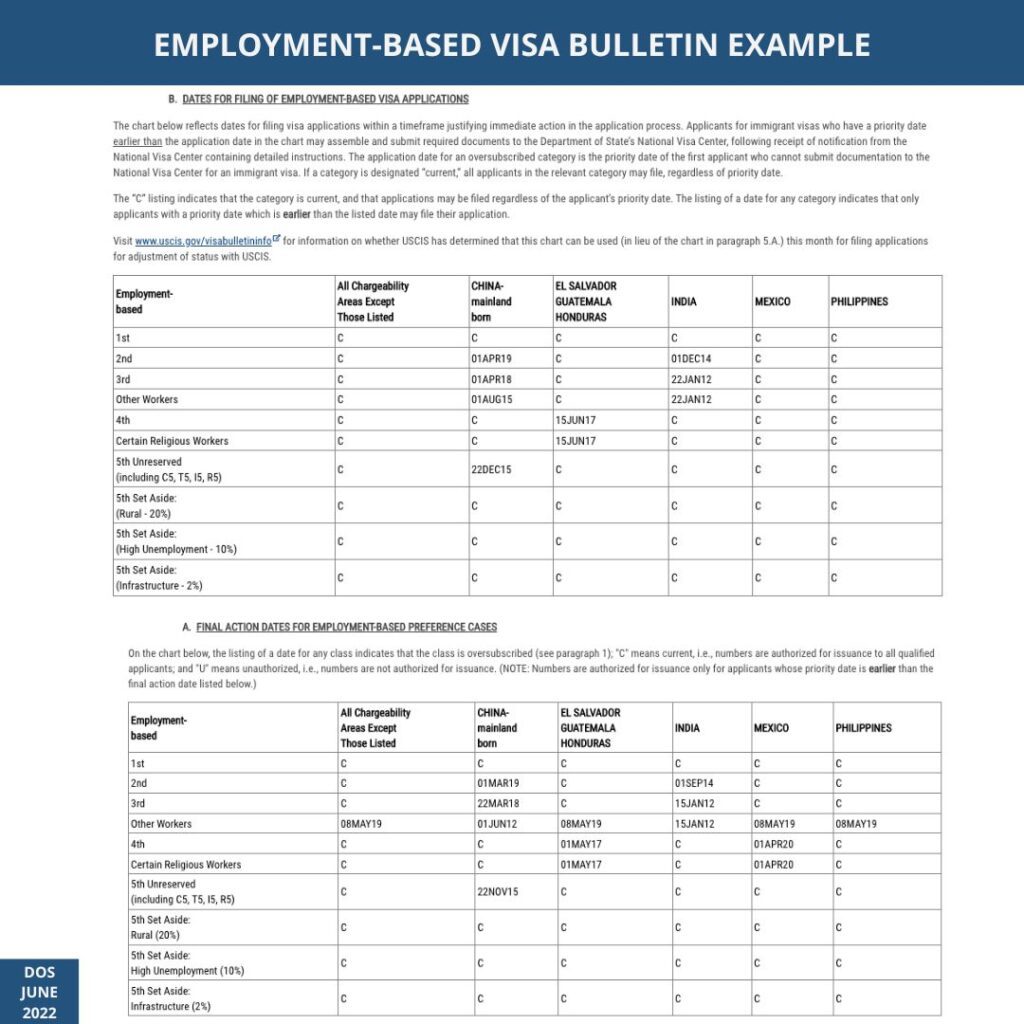
Cross-Chargeability
Cross-chargeability is often used when the person’s country of birth has a visa backlog problem but the country of birth for the person’s spouse does not. The person born in the country that has a visa availability backlog problem will use the cross-chargeability rule to be charged against (use the quota of) the spouse’s country instead (this usually results in obtaining the green card much earlier). For example, a person born in China (which usually has a visa availability backlog problem) with a spouse born in South Korea (which does not have a visa availability backlog problem): both of them can use the quota of South Korea instead of China when they apply to change into their green card visa status. It does not matter which person is the primary person pursuing the green card petition.
Minor children can be charged to either parent’s country of birth, or in some circumstances the child can be charged to a third country that neither parent was born in or had residence in when the child was born. For example, both parents were born in Japan but their child was born in China during a temporary vacation there: the child can be charged against the quota of Japan. Under most circumstances, derivative beneficiaries (such as the spouse or children of green card visa applicants) cannot be eligible to apply to change into their green card visa status before the principal green card visa applicant.
Please note that parents cannot use their minor children’s country of birth under the cross-chargeability rule. For example, both parents were born in China and their child was born in Japan. The parents cannot use Japan which is their child’s country of birth and would still need to use China which is their own country of birth to wait for their green card.
Changing into the green card visa status (the lawful permanent resident immigrant visa status) is the final step in being able to work freely and live permanently in the United States. There are two ways to obtain the green card visa status: adjustment of status and consular processing.
Adjustment of status is usually for a person who is already in the United States with a valid nonimmigrant visa status and has maintained a lawful visa status throughout their time within the United States. On the other hand, consular processing is for a person living outside the United States or for a person who is ineligible in adjusting their status in the United States.
For a person who is residing overseas (outside the United States) or a person who is ineligible for an adjustment of status with the Form I-485 application, consular processing must be done to obtain the EB2 green card visa status (i.e., lawful permanent resident). Consular processing usually involves the person attending an in-person interview at the U.S. consulate or embassy located in their home country. In certain circumstances, a person can do consular processing in another country as a “Third Country National.”
After the interview approval at the U.S. consulate or embassy, the person would have to be admitted entry into the United States by the CBP officer at the border (usually at the airport). In other words, the person would have to physically enter the United States after their interview approval as the final step for their EB2 green card visa status to be activated.
For a person who is already in the United States with a valid nonimmigrant visa, there are usually two options available to obtain the EB2 green card visa status (Lawful Permanent Resident):
(1) Adjustment of Status: this is the more commonly chosen option where the person would file a Form I-485 application to adjust their status without leaving the United States. The person would attend an in-person interview at a local USCIS office in the United States and the interview approval would serve as the final step for their EB2 green card visa status to be activated.
The adjustment of status application (Form I-485) can be filed when the person’s priority date becomes current in the Visa Bulletin which means that there are no backlogs in visa availability for the person’s country of birth (not country of citizenship). This can happen while the green card petition (Form I-140) is still pending (i.e., before approval) with the USCIS or after the green card petition (Form I-140) is approved by the USCIS. It can also happen in concurrent filings (Form I-140 and Form I-485 sent together) where the person’s priority date is already current at the time of filing the green card petition (Form I-140) to the USCIS.
When the adjustment of status application (Form I-485) is filed, applications for the employment authorization document (Form I-765, commonly known as the “EAD card”) and the travel document (Form I-131, commonly known as “Advance Parole”) can also be filed at the same time.
The EAD card allows unrestricted employment where a person can change their job freely and can legally work for any employer in the United States, unlike a work visa such as an H1B visa which restricts a person to work for a specific employer in the United States.
Advance parole allows a person to travel internationally while their adjustment of status is still pending. If a person has a pending adjustment of status application (Form I-485) with the USCIS but leaves the United States without advance parole and does not have a certain valid nonimmigrant visa status (H1B visa, H4 visa, L1 visa, L2 visa, K3 visa, K4 visa, V visa) that allows international travel, their adjustment of status will be considered abandoned.
(2) Consular Processing: this is usually chosen if a person cannot show that they have maintained their lawful visa status in the United States or when the processing time for consular processing is much faster than the adjustment of status.
EAD-ADVANCED-PAROLE-COMBO-CARD(二合一工卡&提前離境許可證)eng-1024x1024.jpg)
When the EB2 green card petition (Form I-140) is approved, the person’s spouse and dependent children (unmarried and under the age of 21) may be eligible to enter the United States under the E-21 or E-22 immigrant status, respectively.
The advanced degree EB2 green card is one of the most popular and commonly used immigrant visas for persons who have at least a master’s degree (or equivalent) and have secured a job offer from a U.S. employer. Under the EB2 green card advanced degree subcategory petition, both the person and the job position offered are required of the advanced degree. The person’s advanced degree requirement under the EB2 green card petition can be satisfied if the person has (1) a master’s degree, (2) a higher degree than a master’s degree or its equivalent (e.g., Ph.D., MD, J.D.), or (3) a combination of a bachelor’s degree (or its foreign equivalent) and at least 5 years of post-college progressive work experience in the specialty.
Most regular EB2 green card petitions require a U.S. sponsoring employer and cannot be self-sponsored (which means that the person cannot start and pay for the EB2 green card petition by themselves). On the contrary, EB2 green card petitions filed with a national interest waiver or a physician’s national interest waiver do not require a U.S. sponsoring employer and can be self-sponsored (which means that the person can apply and pay for their own EB2 green card petition).
For people who qualify for an EB2 green card petition under the advanced degree subcategory, there is a possibility that the person also qualifies for an EB1 green card petition (that requires a higher standard in eligibility) which includes: (1) persons who are nationally or internationally recognized for their extraordinary ability in the sciences, arts, education, business, or athletics (EB1a green card), (2) professors or researchers who are internationally recognized as outstanding in their academic field (EB1b green card), or (3) executives or managers of multinational companies (EB1c green card). EB1 green card petitions do not require a PERM labor certification and the EB1a green card subcategory (for aliens of extraordinary ability) does not even require a specific U.S. employer for the petition just proof that the person will continue to work in their field of expertise.
Other alternative green card petitions that require a similar or slightly higher standard than the EB2 green card petition include: (1) EB2 green card petitions under the exceptional ability subcategory, (2) EB2 green card petitions under Schedule A Group II, or (3) EB2 green card petitions filed with a National Interest Waiver (or a Physician’s National Interest Waiver). The exceptional ability EB2 green cards are for persons who have exceptional ability in the sciences, arts, or business. The Schedule A Group II EB2 green cards are for persons who have exceptional ability in the performing arts, sciences or arts. A national interest waiver can be filed with an EB2 green card petition when the person qualifies for an EB2 green card and is also qualified in being able to make contributions that substantially benefit the United States as a nation. A physician’s national interest waiver can be filed with an EB2 green card petition for certain doctors who agrees to provide healthcare services in certain U.S. government designated facilities or medical personnel shortage areas.
For people who do not qualify for the EB2 green card petition yet, the closest alternative would be the commonly used professionals subcategory of the EB3 green card petitions (Professional, Skilled, Other Workers). Professionals under the EB3 green card petition are required to (1) be a member of a profession, (2) have at least a bachelor’s degree (or its foreign equivalent), and (3) a job offer that requires a bachelor’s degree as entry into the occupation. Skilled workers under the EB3 green card petition are required to have qualifications to perform a job that requires at least 2 years of training or work experience. Other workers under the EB3 green card petition are only required to be able to perform an unskilled job that requires less than 2 years of training or work experience. Similar to EB2 green card petitions, the EB3 green card petitions also generally require a sponsoring U.S. employer and a PERM Labor Certification.
Filing an EB2 and EB3 Green Card Petition at the Same Time
In most cases, people who qualify for the EB2 green card petition is likely to also qualify as a professional under the EB3 green card petition. In some limited circumstances, it may be beneficial for the person to pursue an EB2 green card petition and an EB3 green card petition at the same time. For example, a person qualified for an EB2 green card petition may want to file an extra EB3 green card petition when the visa bulletin shows the EB3 visa category is having less visa availability backlog problems.
If you have an EB2 green card (Advanced Degree) immigration question, please fill out our contact us form or send us an email with some basic information about your background and your immigration needs. We will do our best to respond within 48 hours.
How we can help?
Kylie Huang Law’s immigration attorney will help identify whether the EB2 green card is the appropriate immigrant visa category for the client’s (or the client’s beneficiary’s) professional background. We will work closely with our client to prepare a convincing case for their (or it’s) EB2 green card petition and we will also strategize on how the EB2 green card petition should be presented to achieve the best chances of approval. It is strongly advised and common practice to retain an immigration attorney for an EB2 green card petition due to the complexities in the immigration process and visa requirements.
What does the typical process look like to retain (hire) us?
- Step 1:
- Step 2:
- Step 3:
- Step 4:
- Step 5:
- a.
- b.
- c.
- Step 6:
- Step 7:
- Step 8:
- Fill out the form (with some basic information on what your immigration needs are)
- Sign up and log into the client portal to schedule an appointment online
- Attend scheduled appointment (typically a phone call or zoom meeting)
- Retainment (signing a contract to hire us)
- Start processing case
- Gathering required documents
- Preparing paperwork
- Confirming contents of documents that will be submitted
- Filing the case
- Following up on the status of the case
- Close the case when a final determination is issued
- Step 1:
- Step 2:
- Step 3:
- Step 4:
- Step 5:
- a.
- b.
- c.
- Step 6:
- Step 7:
- Step 8:
- Fill out the form (on what your immigration needs are)
- Sign up and log into the client portal to schedule an appointment
- Attend scheduled appointment (typically a phone call or zoom)
- Retainment (signing a contract to hire us)
- Start processing case
- Gathering required documents
- Preparing paperwork
- Confirming contents of documents that will be submitted
- Filing the case
- Following up on the status of the case
- Close the case when a final determination is issued
- Step 1:
- Step 2:
- Step 3:
- Step 4:
- Step 5:
- a.
- b.
- c.
- Step 6:
- Step 7:
- Step 8:
- Fill out the form (on what your immigration needs are)
- Sign up and log into the client portal to schedule appointment
- Attend scheduled appointment (typically a phone call or zoom)
- Retainment (hire us)
- Start processing case
- Gathering required documents
- Preparing paperwork
- Confirming content of documents that will be submitted
- Filing the case
- Following up on the case status
- Close the case when a final determination is issued

